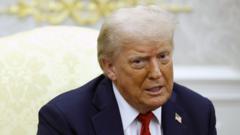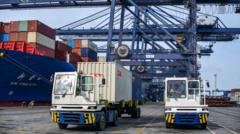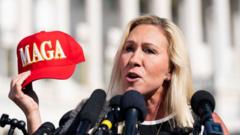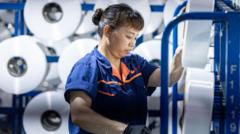In a recent rally, President Trump declared an ambitious hike in tariffs on steel imports from 25% to 50%, marking a significant pivot in U.S. trade policy and signaling a renewed focus on domestic production.
US to Implement Dramatic Steel Tariff Increase, Claims Trump
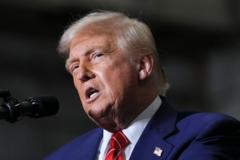
US to Implement Dramatic Steel Tariff Increase, Claims Trump
President outlines bold strategy aimed at revitalizing American steel industry.
The Trump administration has officially announced a substantial increase in tariffs on steel imports, raising the rate from 25% to 50%, a move aimed at shoring up the local steel industry and reducing dependency on imports, particularly from China. The announcement was made during a rally in Pittsburgh, a city historically linked to steel production, where Trump highlighted the expected positive impact on local jobs and the economy.
In conjunction with this tariff increase, Trump revealed that a notable $14 billion investment is set to flow into steel production in the area. This investment is a collaborative effort between U.S. Steel and Japan's Nippon Steel, although specifics about the partnership remain vague. Trump has previously emphasized the benefits of such deals, promising revitalization of American manufacturing.
This decision marks another evolution in Trump's fluctuating tariff strategy since returning to office in January. The implications of this drastic measure on global trade dynamics and the American economy prompt varied reactions from political analysts and sectors within the steel industry. Critics argue that this tariff hike could lead to retaliatory actions from trading partners and increased costs for consumers. Conversely, supporters believe it could bolster the domestic production of steel and create jobs.
As the political landscape develops in response to the new tariffs, the potential consequences for international trade relations and the steel market remain to be seen, presenting both opportunities and challenges for the American steel sector in the coming months.
In conjunction with this tariff increase, Trump revealed that a notable $14 billion investment is set to flow into steel production in the area. This investment is a collaborative effort between U.S. Steel and Japan's Nippon Steel, although specifics about the partnership remain vague. Trump has previously emphasized the benefits of such deals, promising revitalization of American manufacturing.
This decision marks another evolution in Trump's fluctuating tariff strategy since returning to office in January. The implications of this drastic measure on global trade dynamics and the American economy prompt varied reactions from political analysts and sectors within the steel industry. Critics argue that this tariff hike could lead to retaliatory actions from trading partners and increased costs for consumers. Conversely, supporters believe it could bolster the domestic production of steel and create jobs.
As the political landscape develops in response to the new tariffs, the potential consequences for international trade relations and the steel market remain to be seen, presenting both opportunities and challenges for the American steel sector in the coming months.


